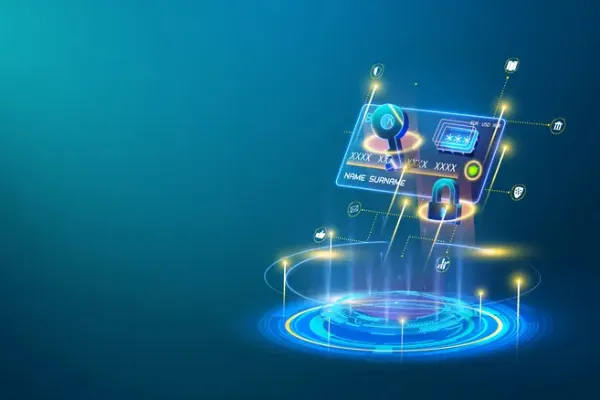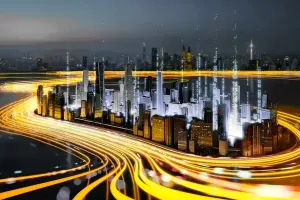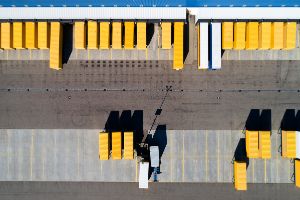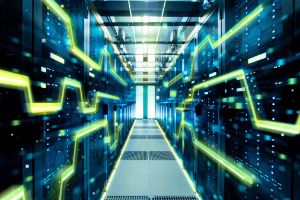Intelligent empowerment: how AI and humans cooperate and feed off each other
People and machines do not have to compete in dire science fiction scenarios. On the contrary, they can (and should) cooperate effectively. And innovation can have a formidable effect, conceiving technology as a tool and not as an end.

Table of contents:
More essential than ever
How we organise society, how we distribute wealth
More training, greater empowerment
As their task is not to completely replace human beings, but to complement and enhance their capabilities, it is logical that the degree of autonomy of the machine is only relative, that supervision and ultimate decision-making is in the hands of a person. Brynjolfsson has dubbed this paradox "the Turing trap", after the great British computer pioneer Alan Turing and his intuition that the true measure of progress in artificial intelligence would be its ability to emulate human thought more and more accurately.
For Brynjolfsson, there are two possible ways forward for artificial intelligence and robotics: Turing's way, which taken to the extreme would lead us to a world controlled by autonomous machines with almost no human intervention, placing humans at the centre. For Carmen Jordá, head of the Intelligence and Foresight Office at Prosegur, these two options are equivalent, with nuances, to "traditional automation, conceived as a process of replacing people with machines, and its alternative, empowerment". She believes "the second way is more powerful, the one being explored right now by truly innovative and disruptive companies".
Jordá, who is also head of Prosegur Research, gives "modern aviation" as a practical example. Aircraft have increasingly refined and efficient technological systems, "but that does not mean that airlines will do without pilots". However, today we must invest more than ever in the training of these professionals, so that they are able to handle the technological arsenal at their disposal with precision. Jordá underlines that "here the logic of empowerment has been applied, that of improving service and enhancing the qualities of the human being, very different from what would have been a simple automation to reduce costs".
The same can be said about drones. We can also say the same about Prosegur's surveillance services, which are in full transition "to a hybrid security model, of effective interaction between men and machines", with the guard at the centre, but relying on such valuable resources as the new Smart Observation Centres (I-SOC).
How can robots help humans work more productively, creatively and efficiently? This question has emerged in recent years as one of the crucial questions of what we now refer to as the industrial revolution 4.0. Classic works of fiction such as Modern Times (Charles Chaplin, 1936), Blade Runner (Ridley Scott, 1982) and Metropolis (Fritz Lang, 1927) dealt with the irruption of increasingly sophisticated and complex machines into the workplace by depicting them as a direct threat to the integrity and dignity of workers. They were intruders who came to dehumanise our routines and usurp our jobs.
However, the recent rise of fields such as Robotic Process Automation (RPA) and, above all, Artificial Intelligence (AI) have consolidated a paradigm shift. Robots are not coming to take anything away from us. Quite the contrary, they can become powerful allies, the ideal enhancer of human capacities.
This is the guiding light of what is referred to as Intelligent Empowerment, a field of applied research focused on designing strategies that optimally combine the work of people and artificial intelligence systems. The golden rule of automation processes has always been that machines should free human beings from routine, repetitive, strenuous and generally unnecessary waste of their time and talents. Now the spectrum of tasks that a machine can perform accurately has expanded greatly in recent years, thanks to advances in machine learning, data processing, cloud computing and the internet of things. Opening up a world of unprecedented possibilities.
According to Stanford University AI expert Erik Brynjolfsson, the drive to develop programmes that emulate human intelligence better and better can be counterproductive in some cases.
Jordá cites recent studies, such as one conducted in 2018 by Brynjolfsson, Mitchell and Rock analysing 950 different jobs, demonstrating that in most modern businesses it is impossible, in practice, to completely replace humans: “Many of their tasks can be automated, but not those that are truly qualitative and strategic”. The challenge is to equip them with tools that enable them to focus on precisely those tasks, the ones that make the difference. "It is rewarding for them, a stimulus for their creativity and proactivity", adds Jordá. One of the main advantages of intelligent use of machines is that it prevents people from becoming machines.
Andrew Ng, a renowned computer science researcher, explains that "we should be capable of entrusting the mental tasks that an ordinary person can perform in a second to AI now or in the near future". Those that require real reflection are best done by humans. There is no shortage of human beings. And it will not be technology that renders them dispensable.
Erik Brynjolfsson believes that "the development of artificial intelligence will generate unprecedented wealth in the next decade". But the distribution of that wealth and the power that comes with it will depend to a large extent on how we guide this formidable process of disruptive innovation. Simple automation could produce less equitable, less transparent and less cohesive societies. The dominance of the smart empowerment strategy, on the other hand, could create more robust and flexible AI systems and human workers who are more capable, more motivated and more involved in value creation chains.
He believes that if the model adopted puts people at the centre, future technological developments will help create far more jobs than they destroy. After all, 60% of today's professions did not exist in 1940 and if the developments in contemporary economies prove anything, it is that employers are always willing to hire professionals with technology-enhanced skills, even if it means paying them better.
At its heart, it is a very simple equation. There are three types of tasks that create value: tasks that humans can perform, human tasks that machines can automate, and tasks that humans can take on with the help of machines. The future of our economic activity, working environments and societies as a whole will depend above all on the medium and long-term developments of this third task type.
The Turing Trap

.webp)
When the talk of the ability of machines to effectively emulate human intelligence began at the Dartmouth conference in 1956, it was very difficult to foresee how far down that road it would go in a relatively short time. Today we know that tasks that did not seem feasible to leave in the hands of a machine (from driving a car to playing a game of chess or hosting an event), because they required such human qualities as discretion or ingenuity, can be taken on very efficiently by artificial intelligences.
However, according to Stanford University AI expert Erik Brynjolfsson, the drive to develop programmes that emulate human intelligence better and better can be counterproductive in some cases. Some of the most powerful systems are very different from human beings, and it's a good thing they are. They will process data with unprecedented accuracy and speed, but they do not have to make complex decisions completely autonomously.

%20portada.webp)
%20portada.webp)
.webp)

